As guitar players know, amplifiers and cabinets can get exceedingly loud, especially when you have a high-powered 100w head that needs a nice big cabinet to go along with it. These exceptionally loud devices have to be turned up to a certain level to get the best sound.
That said, there are many things a player can do to minimize the impact of loud noises or eliminate them altogether. I’ll say right off that the bat that there are 8 methods for playing guitar without nearly as much noise.
To Play Guitar Without Making Noise
1) Plug headphones into your amp
2) Use an amp simulator in a DAW for more volume control
3) Play unplugged
4) Use a soundhole dampener
5) Purchase a silent guitar
7) Use your fingers instead of a pick
8) Tack soundproofing mats onto the walls.
Each one of these is worth exploring on its own though because I find there is something to say about each one. I’m currently running a 100w Hughes and Kettner tube amp through a 2×12 Mesa cabinet and it can get quite loud, however, thankfully, my walls are soundproofed and I’m not afraid to underutilize my set-up.
1) Plug Headphones Into Your Amp
This one is quite self-explanatory, however, it works and it’s definitely the most effective. You can actually purchase guitar amplifiers nowadays that come with a headphone jack in either corner of the model (more on guitar jacks in my other guide).
For instance, my Line 6 Spider II has one, as does my Hughes and Kettner amplifier head. This is going to eliminate the extraneous noise and be 100% effective, without question, because then the only person who will hear you playing is you.
Unfortunately, if you have a much older amp, you might not have this capability, but from what I understand, many amplifiers come with this option now, so you shouldn’t have to worry about it too much.
If you’re looking for a solid pair of headphones that will meet all of your needs, I recommend checking out the Audio Technica ATH-M50x. These are noise-cancelling producer headphones, that are great for mixing and recording.
When you purchase a solid pair of headphones such as the ATH-M50x, you won’t have to buy another pair again. Check out the price on Amazon through my Product Page, you can usually get them for a discounted price online.
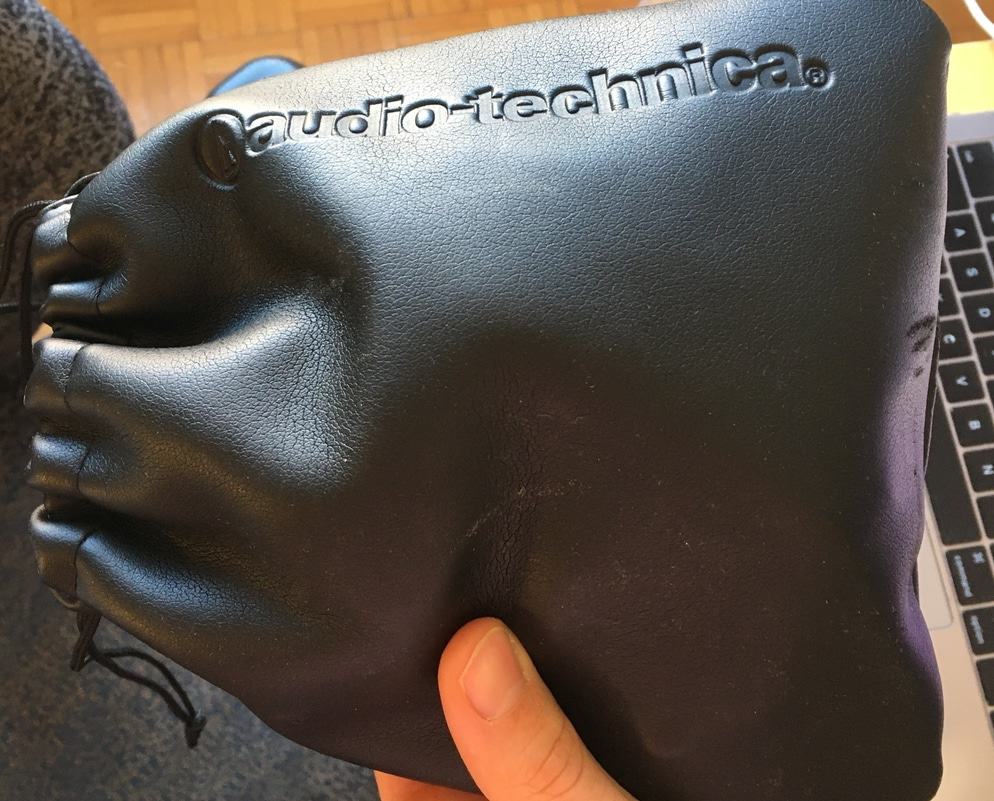
With that said, you don’t necessarily have to go out and drop money on brand-new headphones. You could just use iPod headphones as well, and they’ll work just fine. However, if you want to get serious about recording/producing/mixing, proper headphones are a must.
Also, there are actually adaptors you can purchase for the 1/4″ jack, such as the Vox amPlug2 AP2-BL, which plugs into the 1/4″ jack of the guitar’s amplifier. You can also find it on Amazon through my Product Page.
It converts the aforementioned jack into a headphone jack, that way, even if your guitar amp is super old, you can still use headphones to hear it.
2) Use an Amp Simulator in a DAW and then Plug Headphones Into Your Computer
For this option, I’ll have to recommend you to my other site, Producer Society, where I explore and explain in detail how to plug your guitar into your computer, using an audio interface.
This is a great option for guitar players who not only don’t want to travel around with boat-loads of gear but also who want to minimize noise entirely.
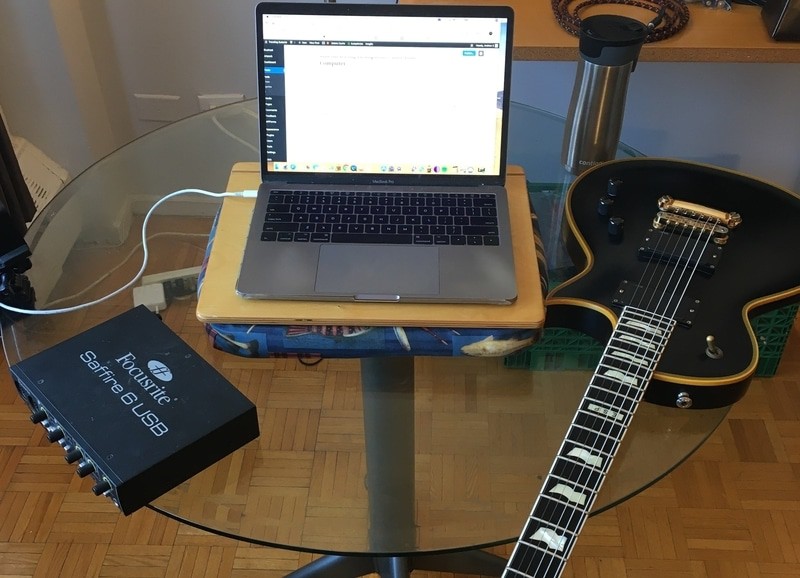
When you have your instrument plugged into your audio interface, via a computer, you, of course, also have the option to plug your headphones into the computer or the audio interface, eliminating all outside noise, to the point where you’re the only one who hears it.
I think it’s worth quickly mentioning, however, that you need a couple of pieces of gear to do this effectively, notably, an audio interface. A great one to purchase is either the Focusrite Scarlett 2i2 or the iRig HD 2. You can read more about both of these at this link here.
Additionally, Garageband is a great beginner program that allows access to many different kinds of amp/cabinet/pedal simulators in the software’s Amp Designer.
At some point, it would be a good move to purchase a more sophisticated and option-heavy software, but in the beginning stages, Garageband will do very well and meet your needs. You can check out my article on Producer Society.
3) Play unplugged
Maybe I’m weird, but I play my electric guitar unplugged literally all of the time, and I’m not bothered by this at all.
I find it does very little to inhibit my desire to play, however, I would be lying if I said there were moments where I wasn’t more desirous of a proper set-up, including a full amp and cabinet combination.
Much of my gear is at my parents’ house, and I live in a studio apartment now, so it’s not feasible to have all of my gear at my place, unfortunately.
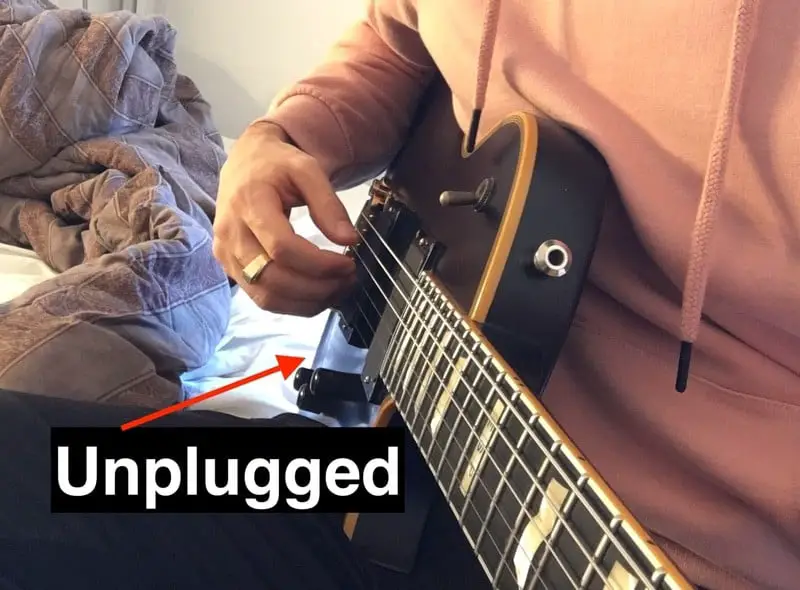
However, this is a great way to practice playing the guitar (backing tracks are amazing for practice as well which I’ve said before), but it does come with some drawbacks .
For instance, when the guitar is actually plugged in, you learn to pay attention to the extraneous string noise, as well as the dynamics of your playing.
In other words, when the guitar is plugged in and amplified, it’s going to bring your mistakes forward and really amplify all of the errors you’re making while playing the guitar.
Regardless, if you’re really worried about bothering the people around you, simply playing without your amplifier is definitely going to help, but at some point, it wouldn’t be a bad idea to follow method #2, that way you can actually hear the dynamics and subtleties of your playing style and technique.
4) Purchase A Silent Guitar
Unbeknownst to many, but you can actually purchase a silent guitar, made by Fender, and other companies that come with a Piezo pick-up.
A silent guitar is essentially a guitar that’s constructed without a traditional body. The body of an acoustic guitar is built in such a way where it amplifies the sound of the strings as much as possible and increases the resonance.
A Silent Guitar, however, doesn’t have this same body. It’s like a guitar but without a wooden body. If you take a look at the Yamaha SLG220s, for instance, you’ll see right away what I’m talking about.
As I noted above, this guitar comes with a Piezo Pick-Up, which is meant for accentuating acoustic guitar sounds. In conjunction with the lack of a regular body, and the pick-up, what you have a is a guitar that’s very quiet when it’s not plugged in, but also has the potential to be extremely loud.
These are amazing instruments, in my opinion, and definitely worth checking out.
5) Purchase a Soundhole Dampener
This is another product that you can buy, specifically tailored toward decreasing the harmonics and feedback during live performances. A soundhole dampener has the unintended consequence of also decreasing the total volume of the guitar.
In other words, the soundhole dampener is not actually meant to attenuate the volume, it’s meant to eliminate feedback, however, it can be used for volume purposes.
An additional unintended consequence of using a soundhole dampener is the fact that it may also change the dynamics and tone of your instrument, but let’s be real, you can’t have your cake and eat it too. It’s either one or the other.
6) Use your fingers instead of a pick
There’s no question that using your fingers to play the acoustic guitar will have a significant effect on the volume of your playing, depending on how skilled you are at using your fingers.
Many guitar players can actually play the instrument with their fingers and have it be extremely loud, but at that point in your development, you’ll also have a much better handle on dynamics.
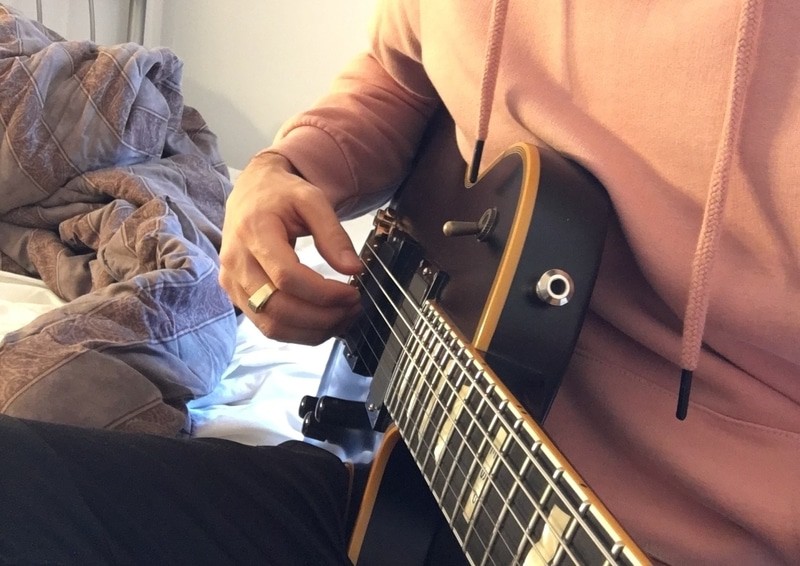
Explained in another way, because you can control the dynamics of your playing through your technique, you can also be more gentle with your finger-plucking, therefore, decreasing the amount of volume.
7) Tack Soundproofing mats (or egg cartons) onto the wall where the offending noises are travelling through to your neighbours.
This one isn’t a tactic specifically regarding technique or the actual structure of your guitar, but it’s something you do after the fact. Putting egg cartons on the offending wall is something that people have been recommending for a long time.
Truthfully, it’s not the greatest way to stop extraneous noise from travelling through to your neighbours, but it does help.
If you really want to get SERIOUS about stopping extra noise from travelling through to your neighbour’s apartment, house, etc, then go out and purchase proper soundproofing mats.
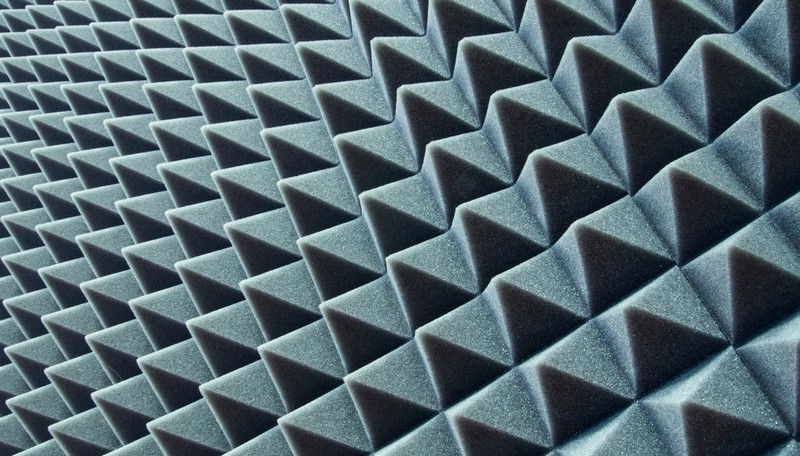
You can buy very thick soundproof mats that are so thick that they won’t allow much sound to travel through the walls at all.
Furthermore, you can actually purchase these very same mats for the floor as well, effectively stopping your neighbours down below from hearing any of the noise, such as the kick drum, assuming you’re playing the drums in your apartment, or some other room.
When it comes to sound-proofing rooms, there are entire websites devoted to this topic, including SoundProofCentral and SoundProofExpert. Both of these sites explore the topic in detail, and if you follow their guide, you should be able to come out on top.
Depending on how serious you are about soundproofing a room, you can purchase mats of varying thickness, including some that are multiple inches thick, and others that are less thick. Obviously, the thicker, the better in terms of noise reduction.
A properly soundproofed room will be soundproofed everywhere, including on the floor, and on the offending walls.
A big part of this is simply having a room at your disposal that is meant primarily for playing the instrument, such as a small bedroom.
Other Tips And Tricks
These are tactics that I find the least efficient and effective, however, they’re at least worth mentioning, in case you really want to put everything into practice.
Putting a T-shirt in the Soundhole of your Guitar (Acoustic)
This is a bit of an unorthodox method for decreasing the resonance of your acoustic guitar, but it does help a little bit. If we’re being completely honest about this tactic, I would say it’s the least effective way of decreasing the sound of your instrument, so I won’t explore it in detail.
Purchasing Lighter Gauge Strings
Some people recommend purchasing lighter gauge strings, which tend to be not as loud as the thicker gauge strings, but this is one of those filler suggestions that people make just to fill out a post, in my honest opinion.
This isn’t going to be what makes or breaks your ability to play quietly and without bothering those around you.
If you do decide to purchase lighter gauge strings, it should be because you like the way they sound or the way they feel underneath your fingers. They’re not going to affect the volume that much.
Purchasing a Mini Amp
Additionally, you can actually purchase small amps from your local music store that are called “Lunch Box Amps” because they’re literally the size of a lunch box.
They’re extremely small and hilarious looking, kind of like what Jack Black uses in School Of Rock, where he’s playing in front of the class.
Using an Amp Stand
Assuming you’re plugged into an amplifier, and you have neighbours below you, it wouldn’t be a bad idea to purchase a stand on which your amplifier can actually sit.
This is going to stop the low (bass) frequencies from reverberating down to the rooms below you, effectively thwarting some of those additional noises.
YouTube Video Tutorial
Conclusion
All-in-all, there are many useful ways to attenuate guitar-playing noise to keep your neighbours and other people happy. If you employ even just a few of the methods I mentioned above, I’m sure you’ll get the desired result. It’s just a matter of taking action and following the steps.

 Written By :
Written By :